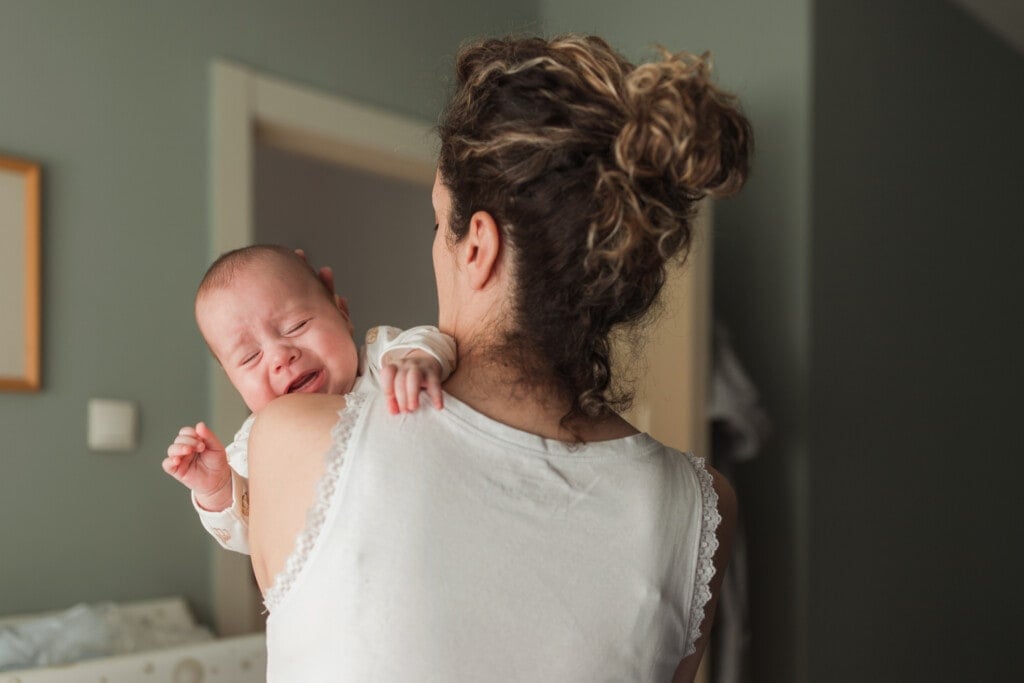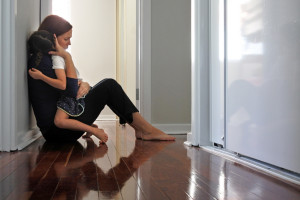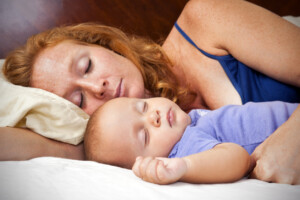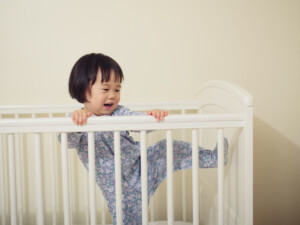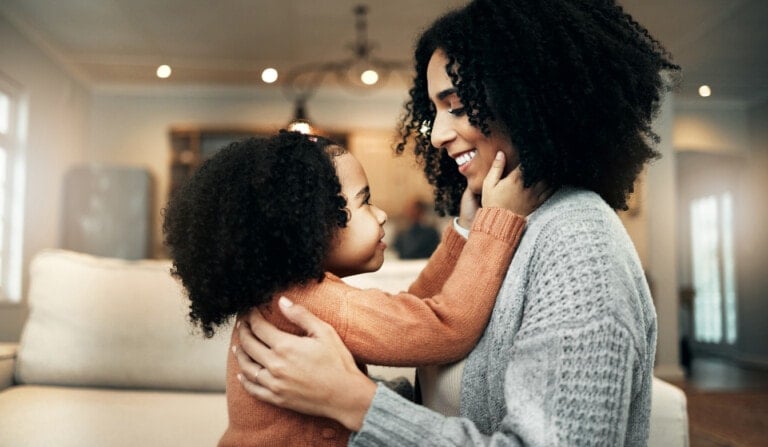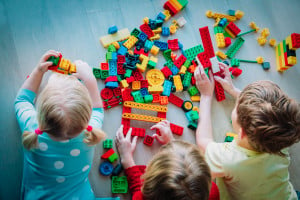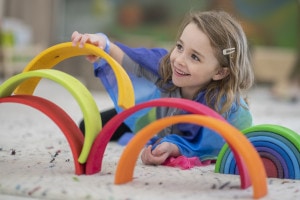I’m sure I paced a good-sized rut on the floor when my little girl was a baby. She would cry rather loudly at night, and the only thing that seemed to work was walking back and forth for hours. Well, it certainly felt like hours during that early time of the morning. And the trickiest part was that just when I thought she was down for the count, and I would lay her down, sure enough, her wailing would start up again! So why do babies cry when you sit or put them down?
I’m not the only one who has had this experience with their babies. It can be such a challenge to figure out. At those moments when you are at your most exhausted, you have to be on your feet, pacing, swaying, and rocking. So, let’s explore why babies cry when you sit and stop when you stand and why it makes any difference to them.
The Behavior is Perfectly Normal
First, it’s important to note that this type of behavior is perfectly normal in babies, and science can help us explain why it happens. Babies are highly vulnerable to various environmental threats. So, they are reliant on their parents to keep them safe. To help, they have built-in and very primitive instincts which give their parents important cues about their needs.
This particular instinctive behavior traces back to when we didn’t live in the manufactured structures we have today. To a time when we had to run and hide and keep ourselves and our families safe from dangerous animals in our environment.1 In fact, this instinct isn’t just something we see in babies. You might even know it and recognize it already. It’s called the “Fight, Flight, Freeze” response.2
A Biological Response
Fight, flight, and freeze refer to the biological response from our body when it recognizes a threat in the environment. This is in anticipation that we might need to fight off or run away from the danger and:3
- our body prepares to protect itself from danger by increasing our blood pressure, heart rate, blood sugar, and fats to give the body extra energy for whatever it needs to do
- blood flow is diverted from other body parts to certain muscles that we need to keep ourselves safe. For example, our arms and hands to fight and legs and feet to run or kick
- muscles are tensed, so our body is extra strong and speedy
So how does all this biological stuff link back to why our babies cry when we sit and won’t let us relax?
Our Babies are Vulnerable
It all comes back to our babies being vulnerable. When they are soiled, hungry, thirsty, or need connection, they may feel stressed or under threat, which is a normal response. Their little bodies undergo the same physical response as adults: fight, flight, and freeze.
The difference is that they are too small and not developed enough actually to flee or fight off the threat themselves. Research has shown that when parents stand up with a distressed infant in their arms, the infant’s heart rate starts to decrease.1 This indicates that the fight, flight, and freeze response is reducing, which means, in turn, that the baby feels safe.
It’s About Instincts
In essence, your baby feels safe because instinctively, they know that if you are standing up or walking, you are more likely to be able to flee from danger. This makes them feel much safer and much calmer than if they were in your arms while you were sitting. Sitting positions make it harder for us to move quickly to respond and escape a threat.
Some babies settle and go quieter, and their body movements become calmer, not only because they feel safe, but from an evolutionary perspective4, it is easier for the parent to flee with an infant who is easy to carry. For example, if they aren’t wriggling, which makes them difficult to hold, or crying loudly, which draws attention to them.
Even though it may be upsetting and difficult to understand why babies cry when you sit and stop when you stand, there are scientific reasons for it. It’s comforting to know that our babies aren’t being awkward on purpose. Remember that your child is only distressed because they don’t understand they’re still safe when you sit down. And you can tap into one of the oldest evolutionary and biological responses to help calm them down. Even if you have to pace for hours to do it!

